Affiliate links on Android Authority may earn us a commission. Learn more.
108MP camera shootout: Samsung Galaxy S20 Ultra vs Xiaomi Mi Note 10
March 28, 2020
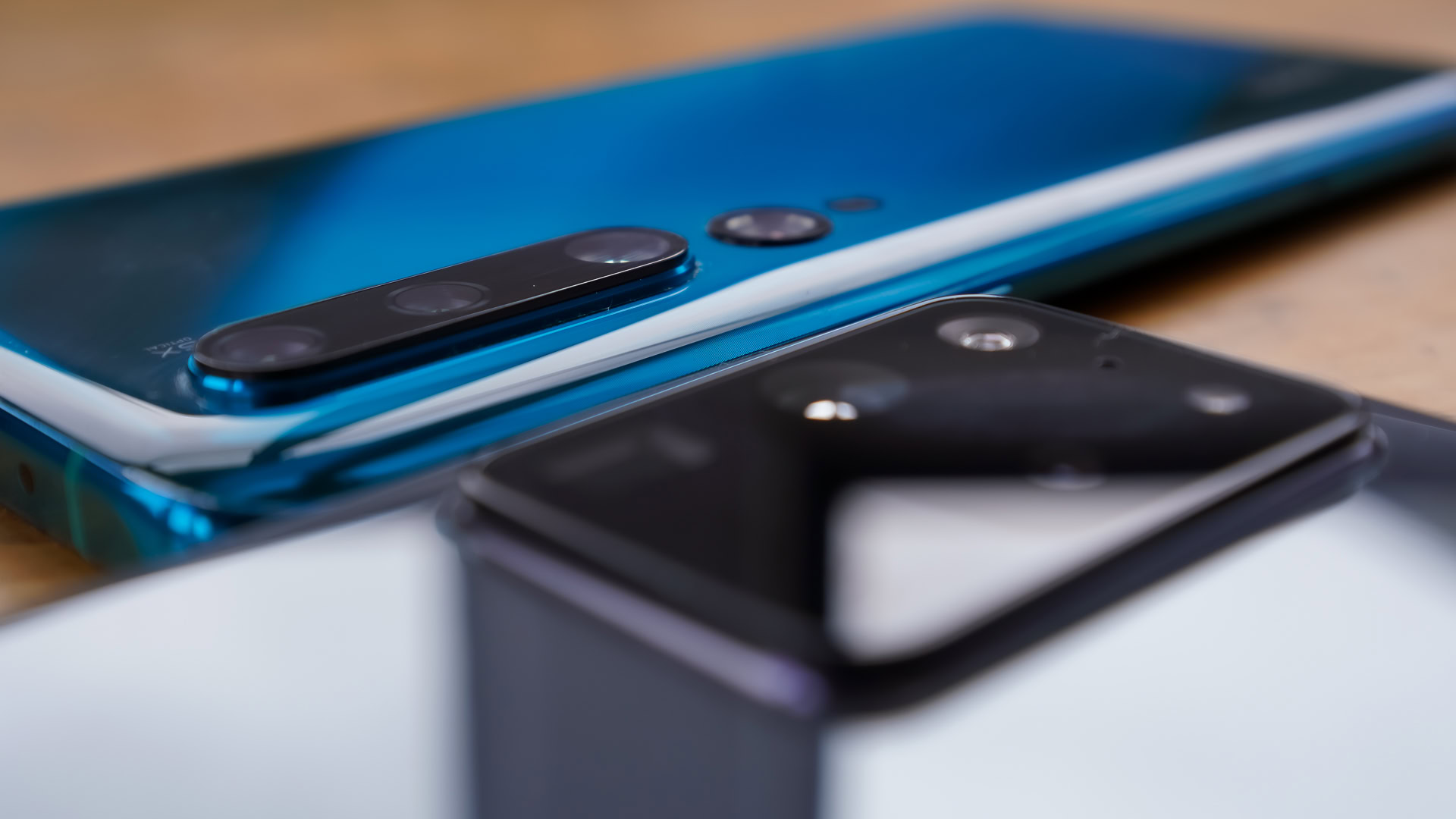
Most seasoned photographers will tell you megapixels aren’t everything — and they’d be right — but megapixels are exactly what matter here. This is a story about two sensors and the software that supports them. In our Samsung Galaxy S20 Ultra vs Xiaomi Mi Note 10 showdown, we assess how the 108MP sensors perform against one another.
As two of the first phones to reach the market with such pixel-rich cameras, it’s important to determine if we’re looking at the future of mobile photography or a marketing party trick. We seek to answer that vital question: Should you buy either of these phones for the megapixels alone?
Note: All the images in the article have been resized for publication purposes. Full-resolution samples are available in a Google Drive folder here.
Samsung Galaxy S20 Ultra vs Xiaomi Mi Note 10: Specs
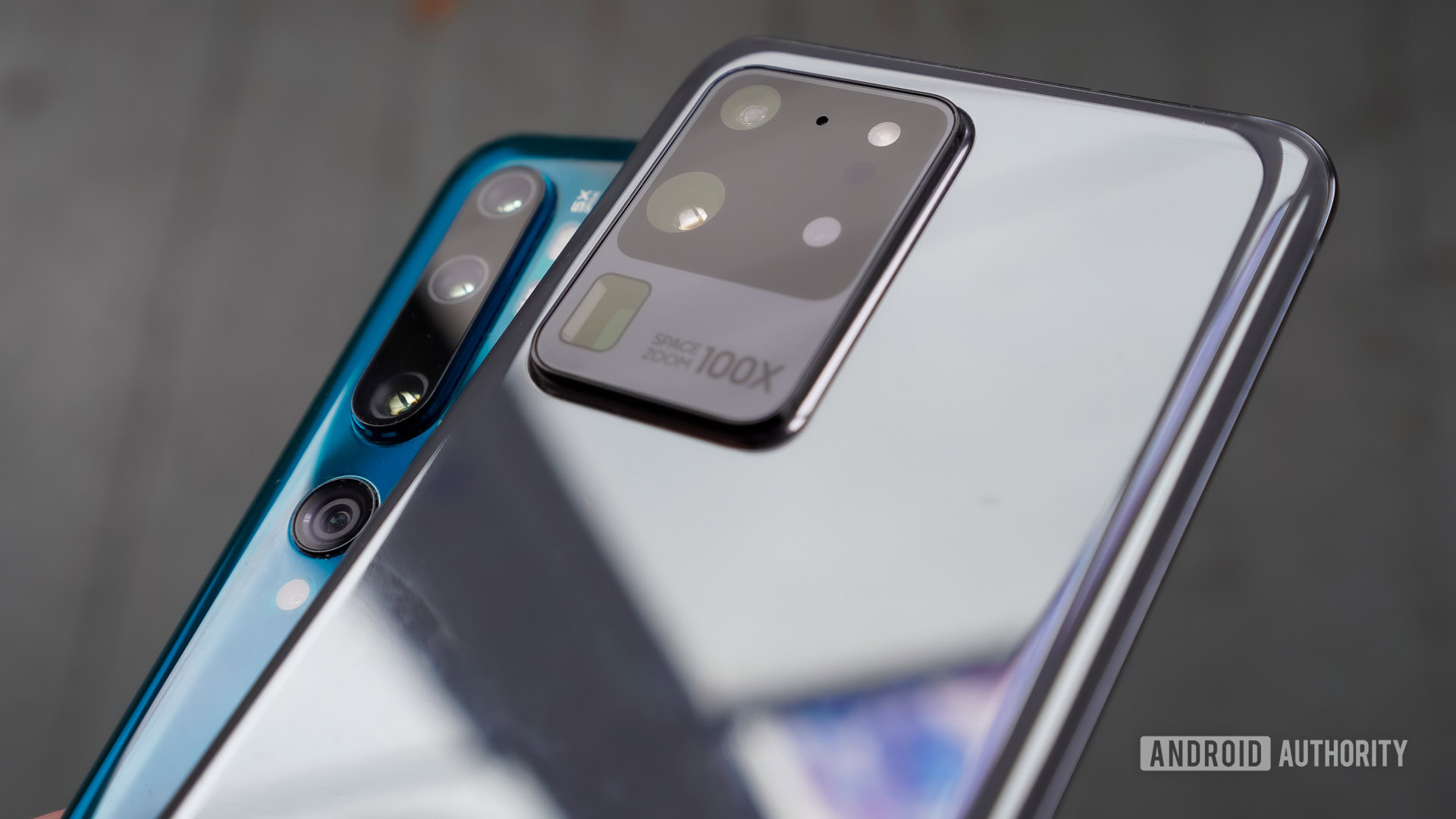
Both sensors are made by Samsung. The S20 Ultra relies on the ISOCELL Bright HM1 sensor and the Mi Note 10 makes use of the ISOCELL Bright HMX sensor. Spec for spec, the two sensors are almost identical, but important distinctions are buried deep in the feature list.
Let’s start with the similarities. Each has an effective resolution of 108MP, with a sensor size of 1/1.33-inch and a pixel size of 0.8um. The HM1 and HMX offer the same electronic rolling shutter, 10-bit color accuracy, super-pixel/PDAF autofocus systems, and 10fps shooting burst speed.
The most significant difference between the HM1 and the HMX is how the sensors factor in pixel binning. The S20 Ultra bins by a factor of nine, or nona-binning, which takes the 108MP count down to 12MP. The Mi Note 10 bins by a factor of four, or tetra-binning, which takes the 108MP count down to 27MP. There are other specs that separate the two sensors. For example, the HM1 can capture 240fps video at 1080p and supports 3D HDR, while the HMX can capture 148fps video at 1080p and does not support 3D HDR. Moreover, the HM1 supports the RAW8 and RAW10 output formats, while the HMX is limited to just RAW10.
Each phone has a multitude of other cameras on board. The S20 Ultra’s telephoto camera snaps 48MP shots at f/3.5, the ultra-wide snaps 12MP shots at f/2.2, and the selfie camera snaps 40MP shots (binned to 10MP) at f/2.2. A time-of-flight (ToF) sensor helps with depth information.

The Xiaomi Mi Note 10 has a 2x optical telephoto camera of 12MP at f/2.0, a 5x optical telephoto camera of 5MP at f/2.0, an ultra-wide 20MP at f/2.2, and a dedicated macro lens of 2MP at f/1.2.
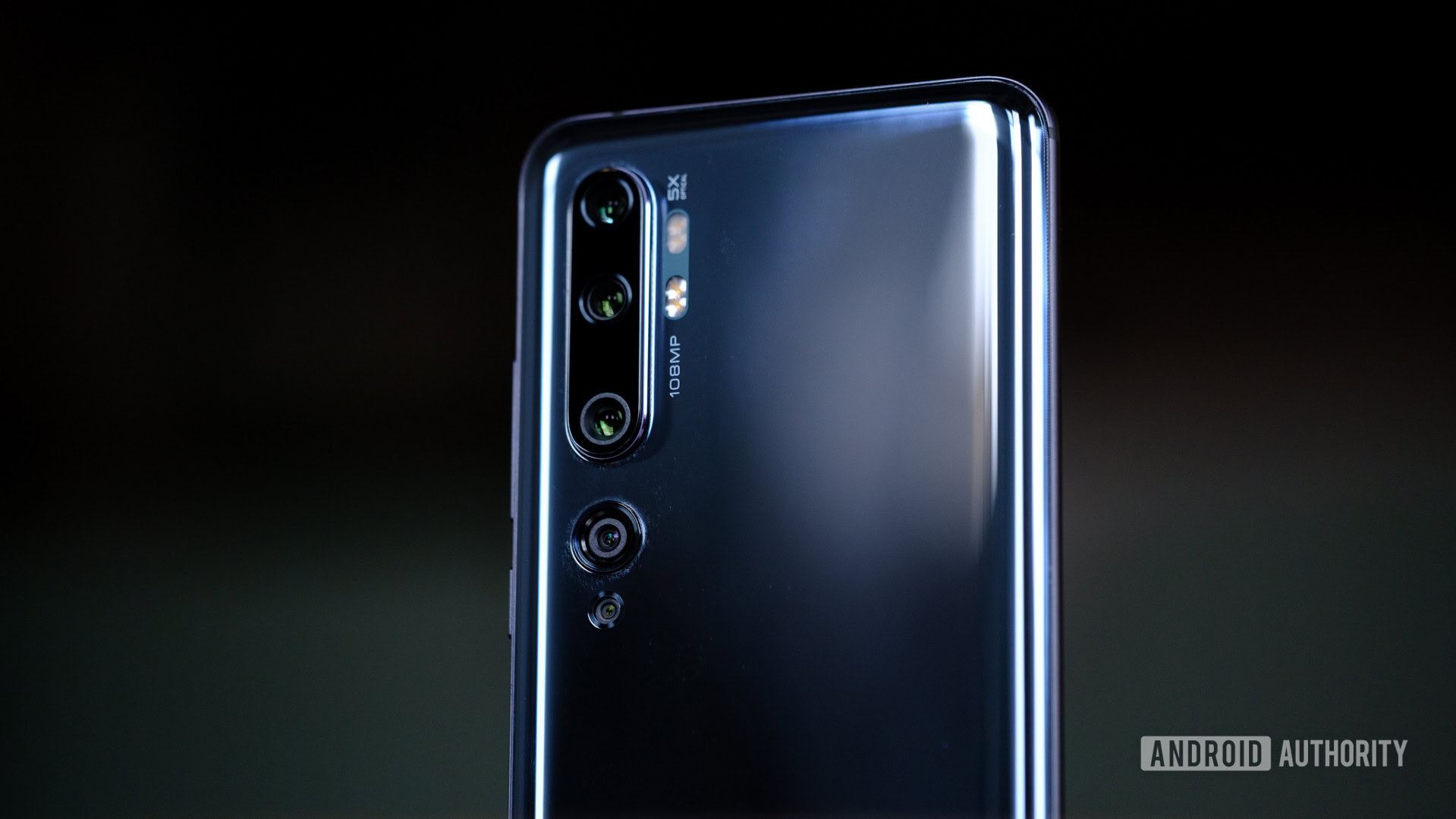
While the sensors are relatively similar, the processors are decidedly not. The S20 Ultra relies on the newer Qualcomm’s Snapdragon 865 and boasts a massive 12GB of RAM. The Mi Note 10, on the other hand, uses the Qualcomm Snapdragon 730G with just 6GB of RAM. Aside from clock speeds, the biggest difference here will be the image signal processor. The S20 Ultra’s Snapdragon 865 has a Spectra 480 ISP with hardware-accelerated computer vision, where the Mi Note 10 has a Spectra 350 ISP.
Samsung Galaxy S20 Ultra vs Xiaomi Mi Note 10: Apps and features
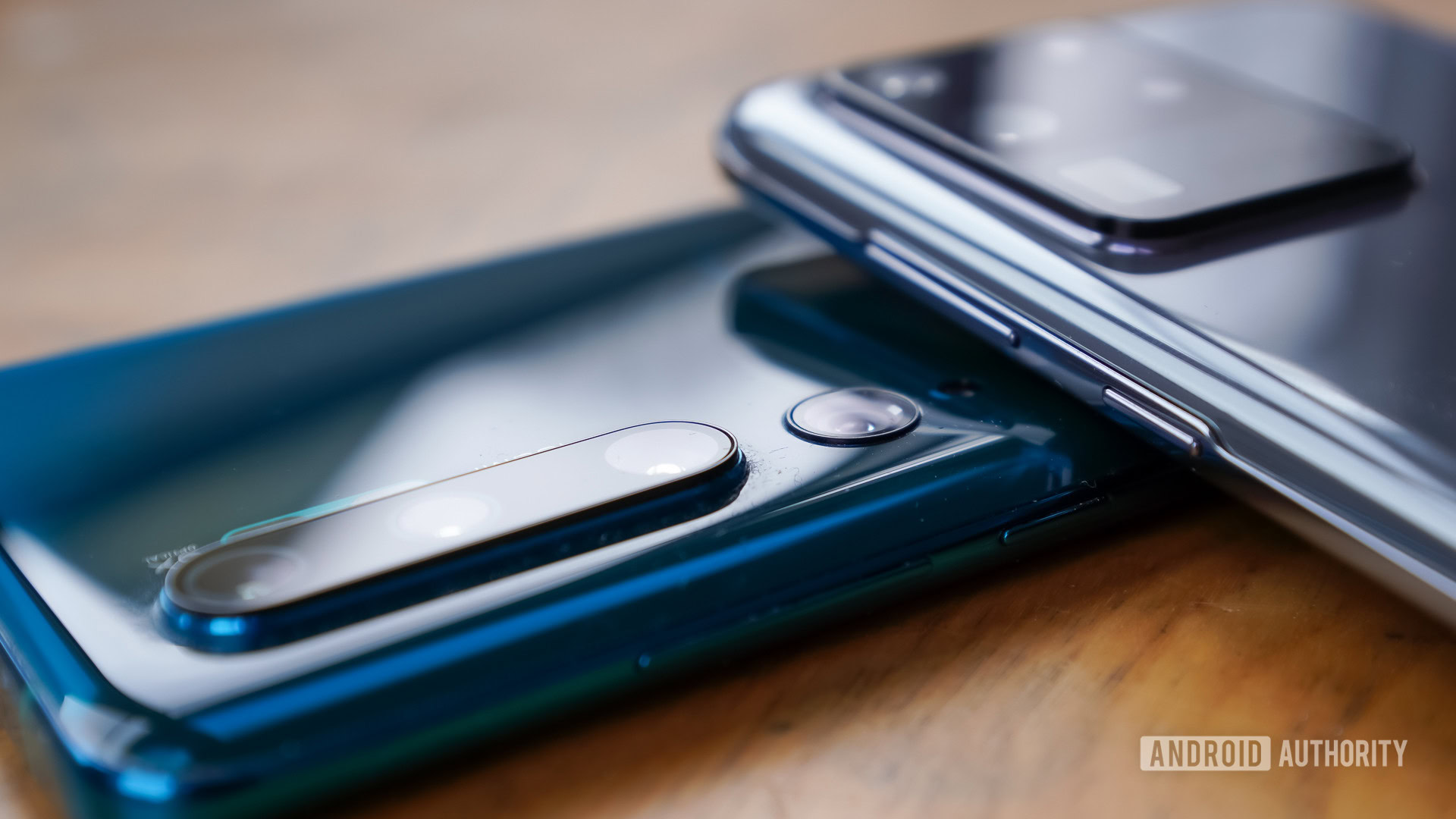
Specs are important, to be sure, but Samsung and Xiaomi have their own camera apps and features therein. The real differentiator is how each phone maker chooses to process the raw data from the sensors. This is where the Spectra 480 and Spectra 350 play a role.
Both Samsung and Xiaomi have rich camera applications that make it fairly simple to find and use features. A double-press of the power button launches the camera app of both phones, though you have to specifically program this behavior on the Mi Note 10.
Samsung simplified its camera UI in One UI 2.0 and we appreciate that. The shutter button is located prominently, with camera modes and zoom tools nearby. I like that Samsung makes certain controls (flash, timer, aspect ratio, etc.) a breeze to adjust with a few quick taps. Shooting modes include photo, video, Single Take, pro, panorama, food, night, live focus (portrait), live focus video, pro video, super slow-mo, slow-mo, and hyperlapse.
Xiaomi’s camera app is almost identical. The shutter button, mode selector, and zoom controls are clustered on one side of the viewfinder, with other functions such as HDR, the flash, and AI assistant accessible on the far side. Shooting modes include slow motion, short video, video, photo, 108MP, portrait, night, panorama, and pro mode. I like that all of these are accessible without having to open a secondary menu, but swiping from one to the next takes time.
These apps are so similar that there’s no clear winner.
Winner: Tie
Samsung Galaxy S20 Ultra vs Xiaomi Mi Note 10: Camera shootout
108MP
I gotta say, none of the images were as noisy as I was expecting them to be. Both Samsung and Xiaomi have done a respectable job of keeping the noise that might be generated by such high pixel counts in check. What I like about the 108MP shots are that they permit unprecedented levels of zoom. You can dial way in and still see a significant degree of detail. Take the tracks above. When you drill down on the foreground, you can really see the grain in the railroad ties as well as the shape of the individual bits of gravel. The Samsung shot looks a bit cooler than the Xiaomi shot and shows a bit more detail, particularly in the trees near the top of the image.
The only thing really separating the electric meters here is the color/tone of the shot. Both are equally sharp and detailed. The Samsung shot shows a bit more contrast and depth, while the Xiaomi shot has a warmer temperature.
In the cemetery shot, you can zoom in and read the details on the closer headstones. That the grave markers in the far background have any definition at all is impressive. Again, the color is about all that sets the two images apart and noise is handled well.
The school images are nearly identical, with only exposure setting the two apart. In the full-resolution files, you can zoom in and read some of the text on door signs.
I feel the 108MP photos from the Galaxy S20 Ultra are, as a collection, more pleasing to the eye and demonstrate more accurate color representation along with good exposure and retention of detail.
One thing to note: The full-resolution files from these cameras are really big. On the S20, 108MP photos averaged 45MB, while on the Mi Note 10 images averaged 30MB. The S20 supports microSD storage, while the Mi Note 10 does not.
Winner: Galaxy S20 Ultra
Daylight
Many of the samples in this comparison demonstrate the difference in tuning Samsung and Xiaomi employ for their cameras. The Samsung defaults to a cooler look, while Xiaomi leans towards the warmer. This automatically gives the Xiaomi shots a darker overall appearance, which sometimes obscures details that are caught in the Samsung images. You may prefer one look or the other. Neither is necessarily wrong. I happen to like the general look of the Samsung photos.
Winner: Galaxy S20 Ultra
Detail
The amount of detail available in these shots is about equivalent. You can pick out the gravel, the ties, the trees and their branches, as well as the texture of the bark. Keep in mind, these were taken with the main cameras binned at 12MP and 27MP for the S20 Ultra and Mi Note 10, respectively, not the full 108MP resolution. Both phones do a fine job and neither really stands above the other.
Winner: Tie
Portrait/selfie
There’s no question in these images that the Mi Note 10 delivered a sharper bokeh effect. Both the portrait and the selfie from the Mi Note 10 show great definition along my arms, though perhaps my head looks a bit too smooth. The opposite is true when it comes to exposure and detail. The S20 Ultra shot is cleaner and shows more detail in the shadows, particularly in the selfie. It’s a really tough call as to which is the superior shooter. I’m going to rate them about the same. However, Samsung should be able to deliver winners here due to the superior processor. Shame that it couldn’t.
Color
In the shot above, there’s no question which camera offers better color. The S20 Ultra shows far richer hues that pop, while the Mi Note 10 looks pale and washed out in comparison. This effect isn’t quite as pronounced in the two “heroes” shots below, but I think the S20 Ultra still has a nicer overall look to the color.
To my eyes, this one is no contest: Samsung does a better job.
Winner: Galaxy S20 Ultra
HDR
This is a challenging photo for any camera. Shooting upward from under a bridge, the phones have to balance the exposure to avoid blowing out the sky, while uncovering details from the underside of the train trestle. The S20 handily bests the Mi Note 10 here. The shot from the Samsung is brighter, shows more detail of the bridge support and rocks in the foreground, and has a pleasing tone. In the shot from the Xiaomi, everything looks dead. There’s a gray lifelessness to the image that’s wholly unappealing. Both the HDR performance and the overall tone of the Samsung shot are simply superior.
Winner: Galaxy S20 Ultra
Low light
In this first shot I think the photos are nearly equivalent. The S20 Ultra delivers a sharper image, but the Mi Note 10 offers richer hues. Either way, the sky looks nice.
This second shot really sets the two phones apart. Samsung handily delivers the better image. The exposure is superior, as is focus and detail. Look at the sign in the lower-left corner; It’s easy to read in the S20 Ultra shot but half obscured in the Mi Note 10 shot. Samsung has low-light photography well in hand, likely thanks to the Snapdragon 865.
Winner: Galaxy S20 Ultra
Night mode
These night mode images were taken in near total darkness. The shot from the S20 Ultra offers more clarity and detail, better color, and far superior focus. The shot from the Mi Note 10 is a mess in comparison.
Samsung edges out the Xiaomi here, too. For example, the S20 Ultra managed to get a decent exposure on the brightly lit sign while also providing detail in the wires on the upper-left section of the photo. The Mi Note 10 over-exposed the sign and managed to lose the wires almost completely.
Night mode often relies on the camera taking and blending a number of shots — something with which the ISP would assist. This could be another result determined by the processor.
Winner: Galaxy S20 Ultra
Wide/zoom
Thanks to their multi-lens configurations, the S20 Ultra and Mi Note 10 allow you to shoot at a variety of zoom levels. Where the S20 ranges from 0.5x to 100x, the Mi Note 10 ranges from 0.6x to 50x. Images from the far end of the zoom ranges are more or less useless, appearing more like watercolor paintings than photographs, but the mid-range zoom levels are fairly useable.
Here we have ultra-wide, 1x, 2x, and 5x shots. They all have fairly decent focus with lots of detail throughout. To my eyes, the photos from the S20 Ultra are better mostly due to the color, more so than the zoom performance.
Winner: Galaxy S20 Ultra
Samsung Galaxy S20 Ultra vs Xiaomi Mi Note 10: Which wins?
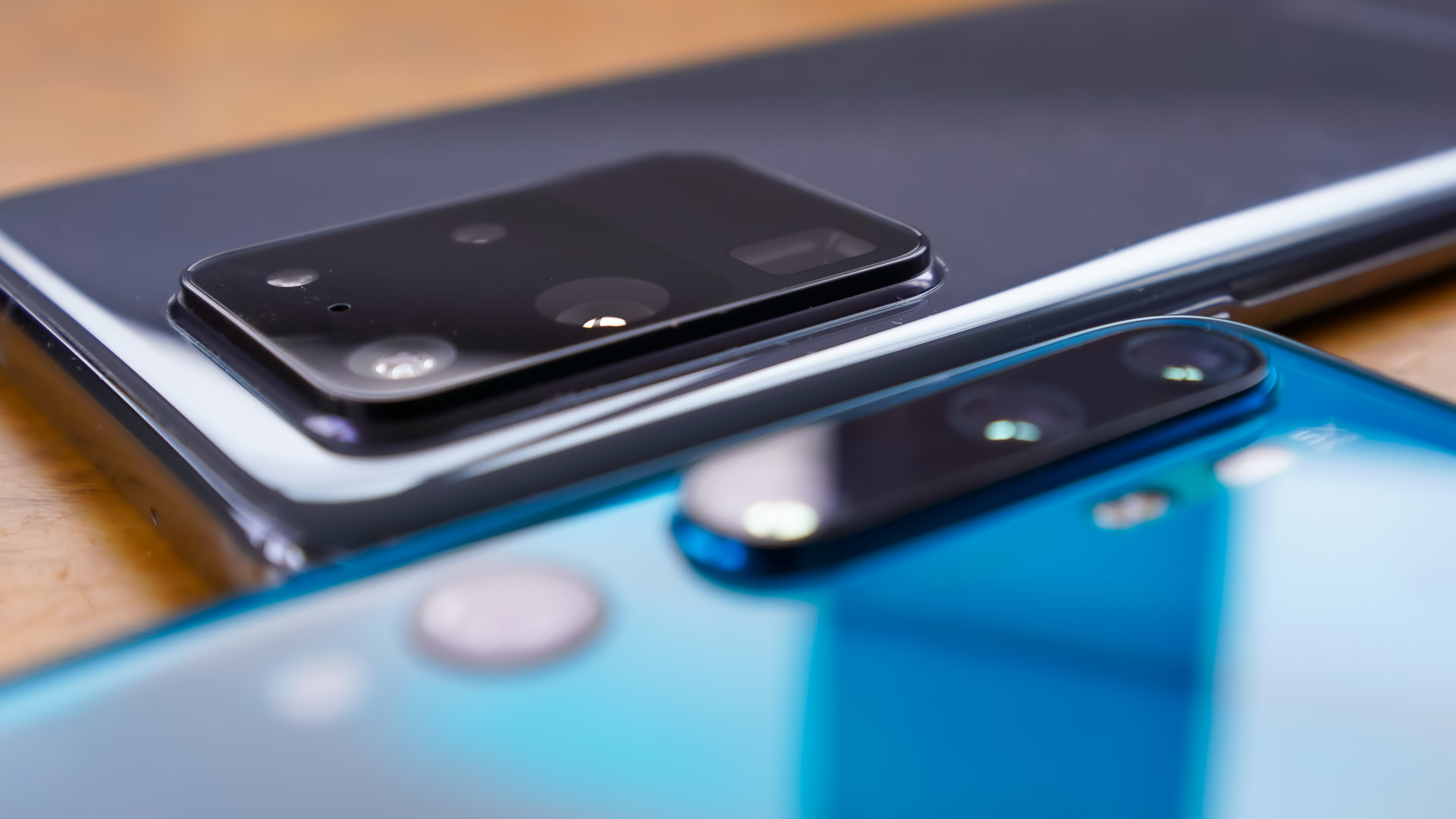
The old saying “You get what you pay for” rings really true here. It should be obvious that the Samsung Galaxy S20 Ultra is the better performer between these two phones, and you’ll pay a lot more for it than the Xiaomi. How much more? Try three times more. Where the Mi Note 10 is an affordable $440, the S20 Ultra costs a wallet-draining $1,399. Yep, it’s almost $1,000 more for the Samsung. Are the photos $1,000 better? Probably not, but better they are.
Both phones do a fine job, and the 108MP shots are particularly close between them in terms of quality. They should be, given that the sensors are almost identical. It’s a marvel that Xiaomi was able to keep up at all, given the difference in processors. What bugs me most about this entire series of photos is the washed out, flat tone of the images from the Mi Note 10. Many of these were taken at midday with a mostly sunny sky. As has been obvious throughout this exercise, the S20 Ultra shoots warmer, truer colors that have a visceral impact on the overall look of the images.
If megapixels are what turn you on, it’s hard to argue with 108MP for $440. If you want better photos across the phone’s range of features, the Samsung Galaxy S20 Ultra is the winner. Whether or not that’s worth $1,399 is a question only you can answer.
Winner: Samsung Galaxy S20 Ultra
This concludes our Samsung Galaxy S20 Ultra vs Xiaomi Mi Note 10 photo comparison. What do you think? Feel free to offer your opinions in the comments below. Moreover, don’t forget to check out our S20 Ultra vs Pixel 4 XL and S20 Ultra vs OPPO Find X2 Pro comparisons.